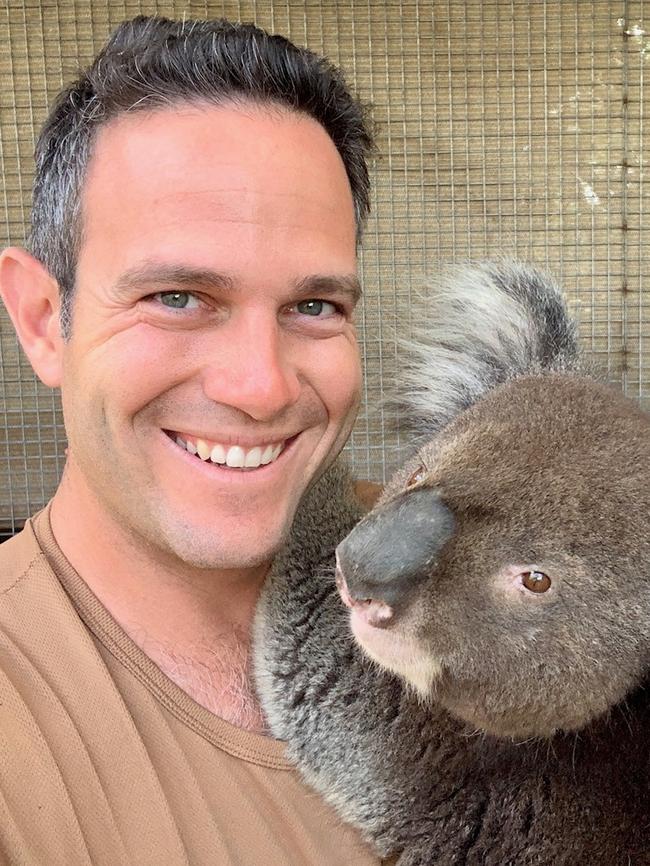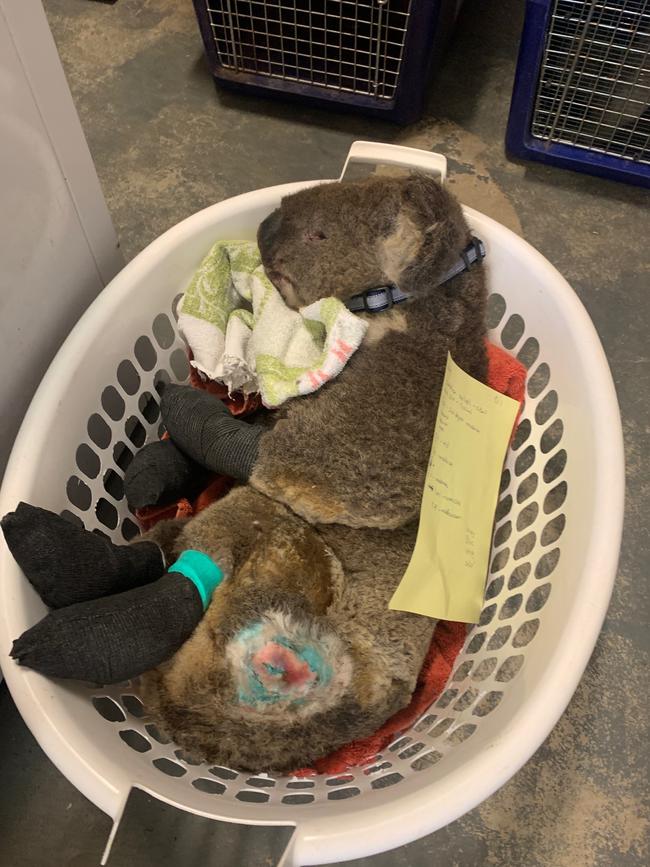Bushfire toll: Saving burnt baby koalas will stick with me forever
As a vet, it’s the sad reality of my job to deal with animals in pain. But what I saw on Kangaroo Island will always stay with me, writes Dr Garnett Hall.
Rendezview
Don't miss out on the headlines from Rendezview. Followed categories will be added to My News.
As a vet, I’ve always had extraordinary empathy for animals and it bothers me when they’re put in situations they don’t understand.
As a vet, it’s also the sad reality of my job to deal with animals in pain.
But nothing prepared me for the sheer decimation to our native animals and their habitats when I travelled to Kangaroo Island earlier this month as part of the national disaster response effort.
Famed for its natural beauty and thriving wildlife populations, the island was severely burnt by a succession of fires that scorched more than half the landmass.
It saddened me to see that the flames had transformed the Flinders Chase National Park into a blackened, smoking wasteland more reminiscent of Mordor from Lord of the Rings.

I expected to see a large fire ground, but this was vastly more catastrophic than I had ever imagined.
Large areas of farmland and several national parks had been destroyed.
The bodies of partly-burnt animals were scattered across the smouldering hills.
Despite the heroic efforts of firefighters, houses and human lives had been lost.
Active fires were still burning in several areas, and I would soon witness even more destruction.
I was sent to provide veterinary care to the burnt and injured animals.
Local vets welcomed my assistance and took the time to explain that normally Kangaroo Island is home to a thriving population of kangaroos, wallabies, echidnas, bandicoots, goannas, cockatoos and koalas — some of which are unique to this special part of South Australia.
RELATED: How to reduce Morrison’s burning issue? Focus on fuel loads
The extensive network of National Parks that normally provides food and shelter had been severely damaged.
The majority of native animals in the burnt zones are thought to have perished, along with an estimated 100,000 sheep and 2000 cattle.
Those that were lucky enough to survive, will now struggle to stay alive due to the habitat destruction and lack of food.
I treated hundreds of animals that week, most for severe burns.
Some I put to sleep because of injuries that were too gruesome to survive.
Thankfully, rapid veterinary care will enable many to recover from their burns and eventually return to the wild.
Humans can do a lot of good when we set our minds to it. We can identify problems, understand what needs to be done, and then fix them.
But these poor animals didn’t understand.

They didn’t understand how their island home had caught fire. They didn’t understand why their habitat is now completely destroyed. They didn’t understand that most of their mates are now dead — incinerated in the fires.
They didn’t understand why our team were capturing injured survivors, restraining them and giving them needles so they lose consciousness.
They didn’t understand why their charred skin needed to be removed, their wounds bathed and dressed, and their limbs bandaged.
Peeling layers of blackened skin off a baby koala is the sort of grim memory that sticks with you.
It was a horrible experience, and I am thankful that we could administer anaesthetics to make it as pain-free as possible.
This inability to understand makes my heart ache for these animals.
RELATED: Faces of heartbreak — Nation mourns 29 lives lost
But we can understand. We owe it to the animals to understand why this has occurred – this is what sets humans apart. Unfortunately, sometimes it takes a disaster to make this clear on a larger scale.
We need to understand and acknowledge that our environment is not as healthy as it could be. We could be doing a much better job of protecting and nurturing our valuable ecosystem.
Kangaroo Island will recover, but it will take some time and effort.
We will need to help the animals that live there to once again thrive. But let us also do what we can to minimise the likelihood of this happening again – not just on Kangaroo Island, but across the country.


We need our leaders to acknowledge that there is a problem.
We need to challenge our scientists to develop solutions.
We need businesses to foster innovation.
We need to enable landowners (private and government) to reduce fuel loads and fire risks.
We need to trust and empower our farmers to manage their animals and their land.
We need to regulate industries that are polluting our atmosphere and our seas – starving and choking our animals.
And we need to equip our emergency services to respond to disasters.
But most of all we need to inspire each other. Humans are the only creature that can understand and shape our world.
Our poor animals might not have the ability to understand what is happening to their environment, but we certainly should.
Dr Garnett Hall is a vet with West Coast Veterinary Hospital.
